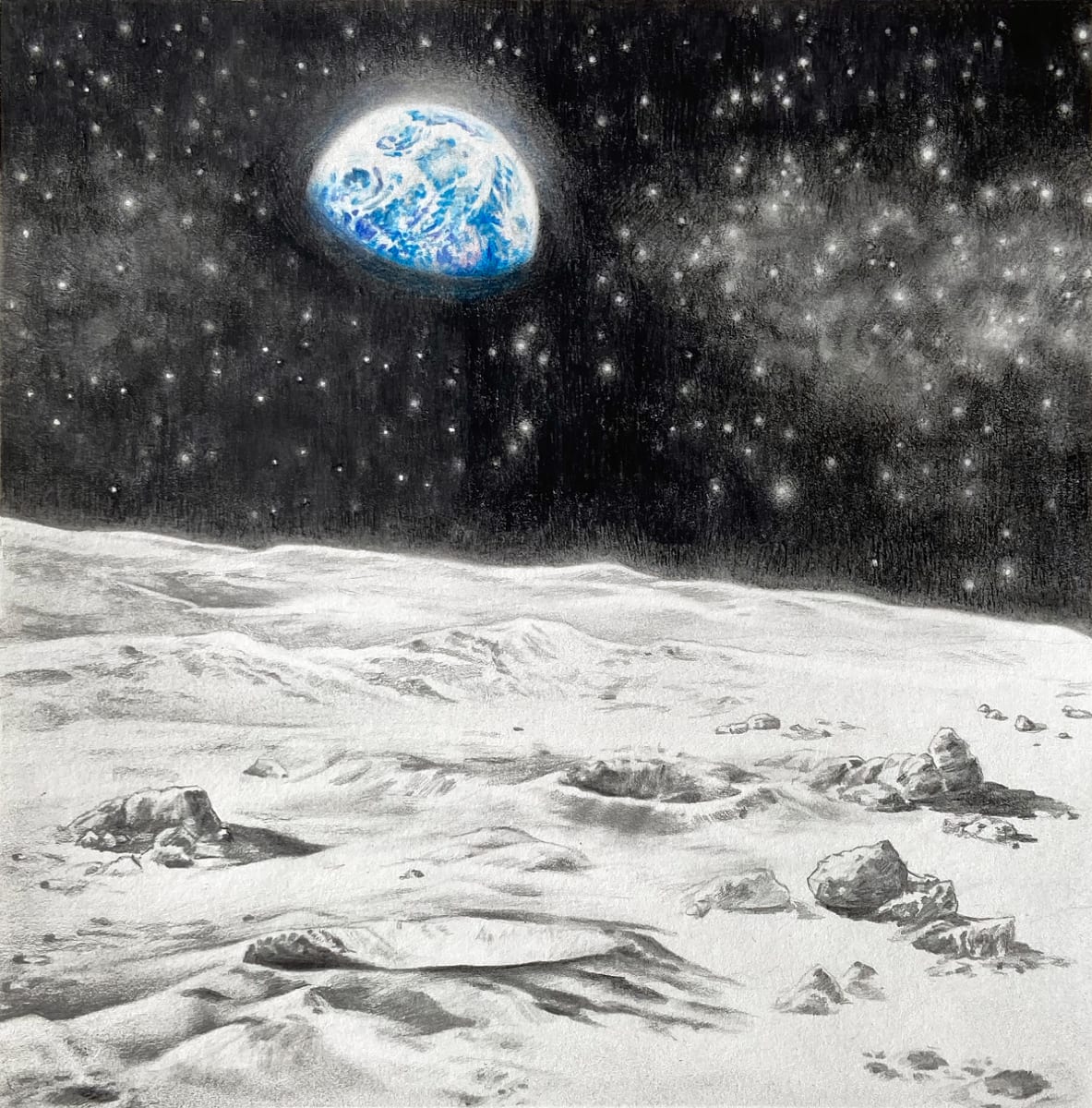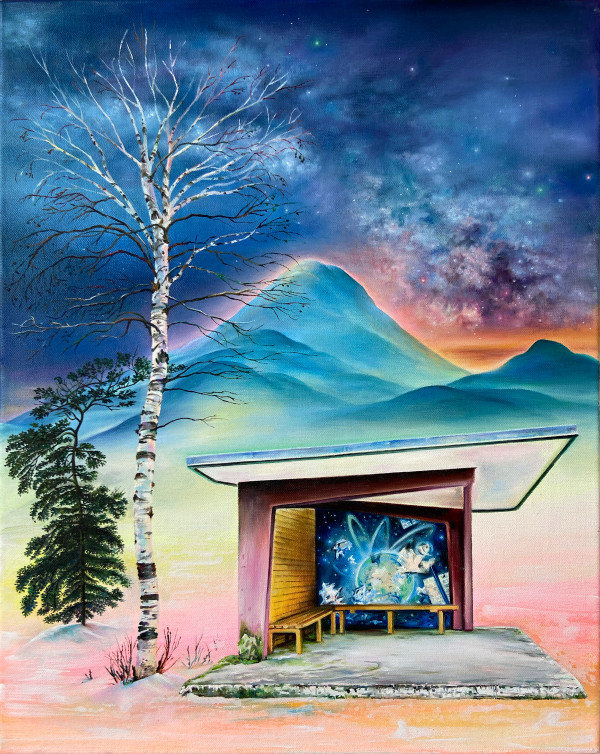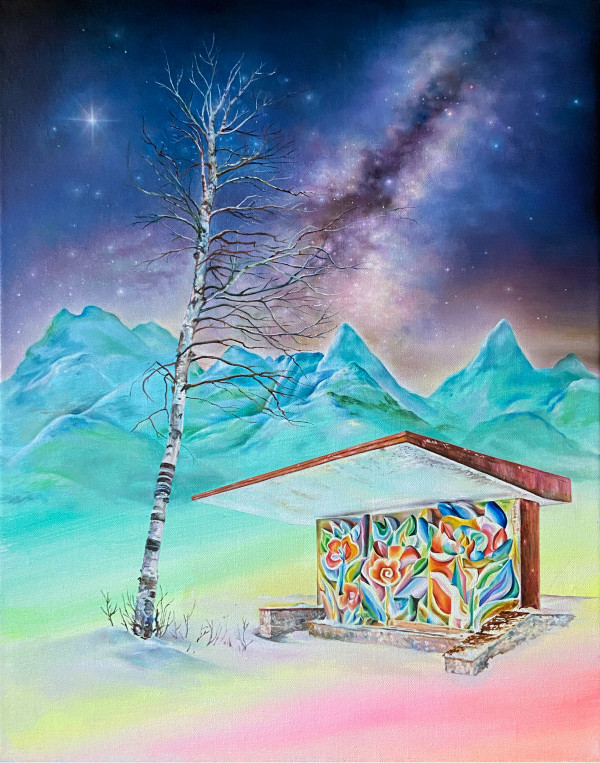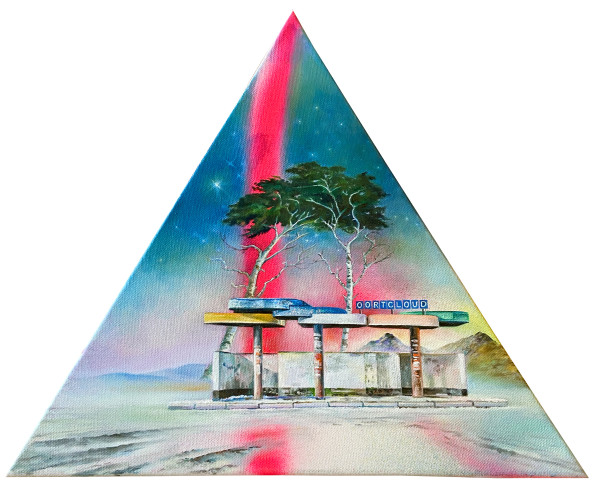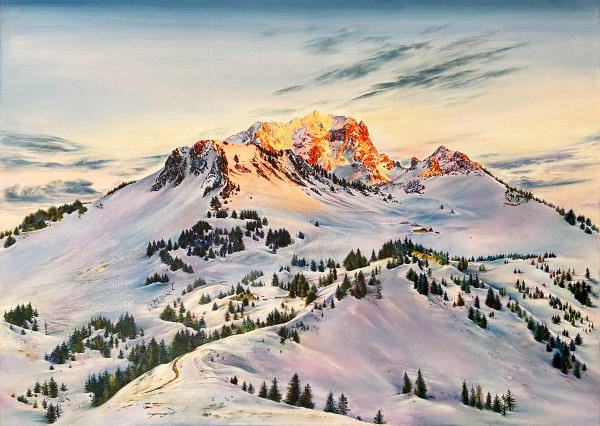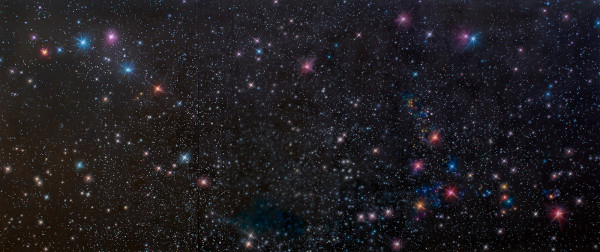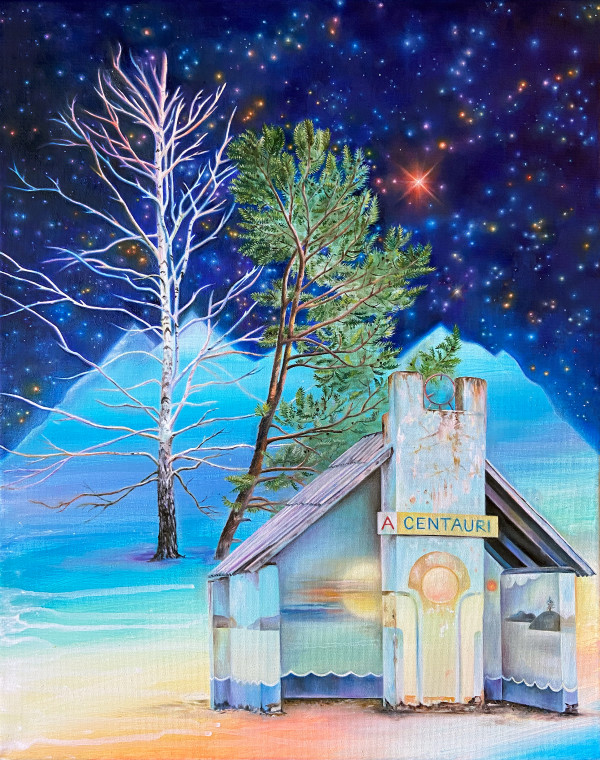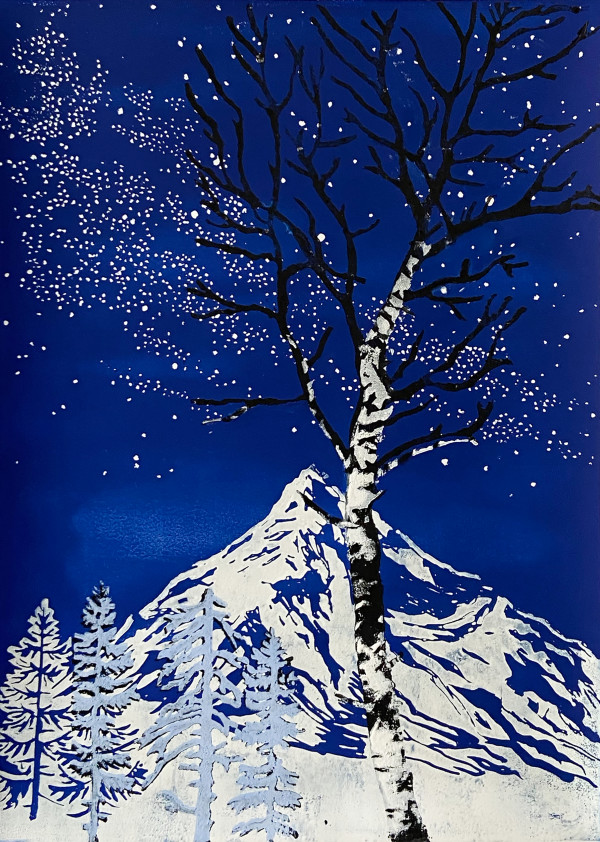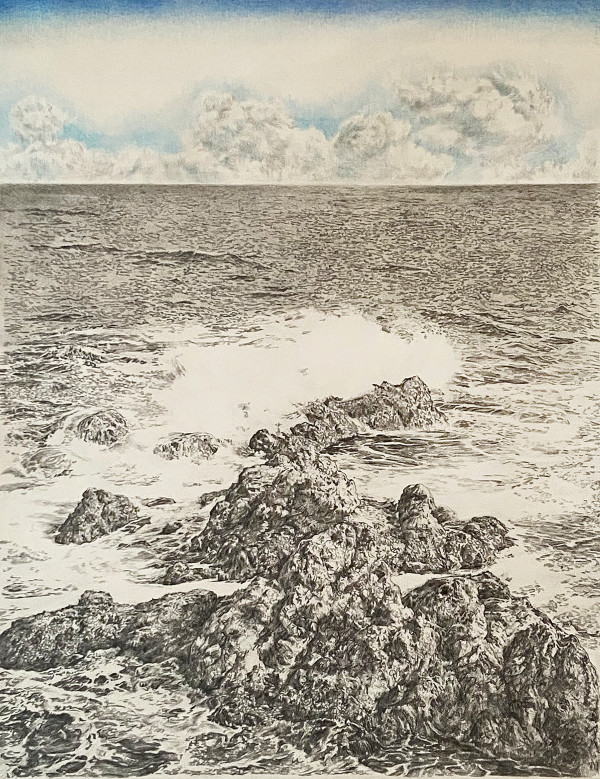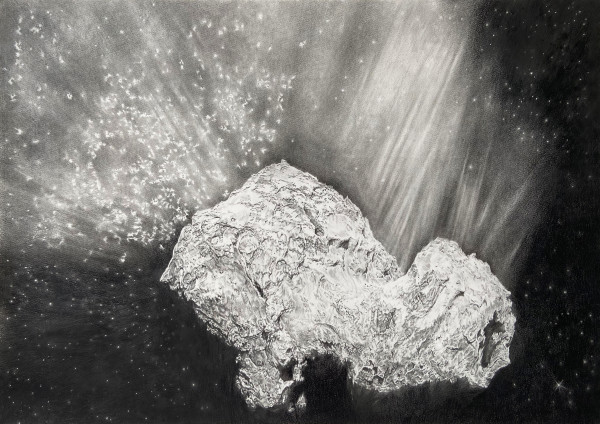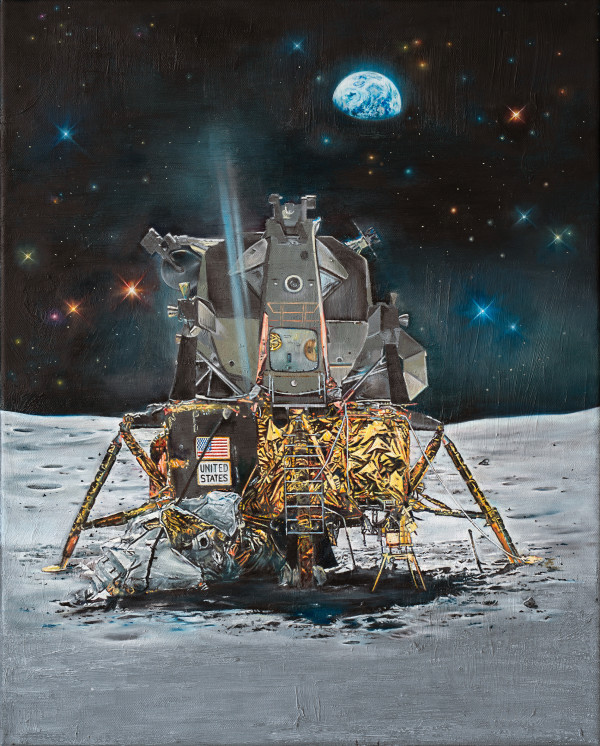It is taken for granted that the sky on our planet is blue during the day and black at night. However, if you change perspective and look at the sky from the "farther shore" of the moon's surface, you only see stars surrounded by deep black. On the horizon of the Earth's satellite is our home planet, as a "blue ball," the brightest celestial body. The gray lunar regolith marked by crater impacts becomes the shoreline of a romantic scenario. With its cultural landscape, the Earth stands in stark contrast to the moon's surface. On the moon, we still experience a naturally created landscape that carries the beauty of the untouched. The change of perspective can stimulate a new understanding of sustainable development.
The moon is quite large compared to other planet-moon systems, about a quarter of Earth's diameter, and that is why one sometimes speaks of a double planet system.
Text in German:
Es ist so selbstverständlich, dass der Himmel auf unserem Planeten tagsüber blau und nachts schwarz ist. Wechselt man jedoch die Perspektive und schaut vom „Anderen Ufer“ der Mondoberfläche aus in den Himmel, sieht man nur Sterne umgeben von tiefem Schwarz. Am Firmament des Erdtrabanten ist unser Heimatplanet, als „blaue Kugel“, der hellste Himmelskörper am Horizont. Der graue und durch Kratereinschläge gekennzeichnete Mondregolith wird zum Ufersaum eines romantischen Szenarios. Die Erde, mit Ihrer Kulturlandschaft, steht im starken Kontrast zur Mondoberfläche. Auf dem Mond erleben wir noch einen natürlich entstandenen Landschaftsraum, der die Schönheit des unberührten in sich trägt. Der Perspektivwechsel hat das Potenzial ein neues Verständnis von nachhaltiger Entwicklung anzuregen.
Der Mond ist im Vergleich mit anderen Planet-Mond-Systemen ziemlich groß, sein Durchmesser beträgt etwa ein Viertel des Erddurchmessers. Deshalb spricht man manchmal auch von einem Doppelplanetensystem.
- Subject Matter: Landscape Nightscape Starscape Moon

